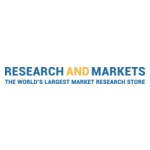DUBLIN--(BUSINESS WIRE)--The "Global Medical Device Connectivity Market: Analysis By Product & Services, By Technology, By Application, By End User, By Region Size and Trends with Impact of COVID-19 and Forecast up to 2029" report has been added to ResearchAndMarkets.com's offering.
The global medical device connectivity market in 2023 stood at US$2.35 billion, and is likely to reach US$8.84 billion by 2029. The global medical device connectivity market value is projected to grow at a CAGR of 24.71%, during the forecast period of 2024-2029.
Global medical device connectivity market is fragmented. The key players are constantly investing in strategic initiatives, such as adoption of new technologies, introducing their services to emerging markets and more, to maintain a competitive edge in this market.
One of the prominent factors driving the rise in medical device connectivity's demand include escalating demand for seamless communication between various departments and systems, enhancing overall efficiency and patient care in healthcare. Digital transformation and the adoption of electronic health records are driving the market expansion.
North America medical device connectivity market enjoyed the highest market share in 2023, primarily owing to reasons such as the high prevalence of chronic diseases and increasing adoption of EHRs. Government initiatives including the promotion of Health Information Exchange (HIE) and telehealth services are also driving the integration of connectivity solutions that contribute to the growth.
The US is the world's strongest market for medical device connectivity because the region has one of the highest healthcare spending rates globally. This substantial investment in healthcare infrastructure and country's leadership in research and development has driven the technological innovation, contributing to the demand for connectivity solutions that enhance interoperability and data exchange.
The Asia Pacific medical device connectivity market is expected to experience fastest growth due to increasing adoption of electronic health records (EHRs), rising healthcare digitization efforts, growing prevalence of chronic diseases, rising healthcare spending, and increased disposable income. Moreover, the COVID-19 pandemic coupled with the growing digitalization of healthcare institutions will also boost the market growth over the coming years.
Also, the Chinese government has designated AI as a strategic priority and has committed large resources to its research, resulting in a robust startup and innovation ecosystem. Furthermore, Chinese healthcare providers are implementing AI-powered solutions to improve patient outcomes and lower healthcare costs, which is expected to boost growth during forecasted period.
Additionally, the COVID-19 pandemic has emphasized remote patient monitoring, further fueling demand for connectivity. Initiatives by authorized organizations like HealthIT.gov and the US Department of Health and Human Services are driving growth. Furthermore, the medical device connectivity market is predicted to grow due to regulatory demands, evolving healthcare policies, data analytics, and the need for integrated healthcare systems.
Market Segmentation Analysis:
By Product and Services: According to the report, the global medical device connectivity market is bifurcated into two segments based on the products and services: Solutions and Services.
Solutions segment acquired majority of share in the market in 2023 due to the increasing adoption of electronic health records (EHRs), the escalating demand for interoperability and data exchange, the rise of Tele-healthcare and virtual care, the need for remote patient monitoring, and ongoing technological advancements.
While, services segment is the fastest growing segment as continuous advancement in software solutions is leading to rising requirements for installation and training services. Furthermore, customized training and education, continuous support and maintenance, expansion of EHR systems, tele-healthcare and remote patient monitoring, and ongoing technological advancements and innovation are collectively expected to drive the growth of services segment.
By Technology: According to the report, the global medical device connectivity market is bifurcated into three technologies: Wireless, Wired and Hybrid.
Wireless segment acquired majority of share in the market in 2023 and is the fastest growing segment as well, as wireless connectivity in healthcare provides flexibility and mobility, enabling easy movement of medical devices. Also, the rise of remote patient monitoring solutions, especially in home healthcare and telehealth, drives the demand for wireless connectivity. Further, the integration of 5G technology and IoT are expected to drive the growth of wireless connectivity during forecasted period.
By Application: According to the report, the global medical device connectivity market is bifurcated into four applications: Vital signs and Patient Monitors, Anesthesia Machines and Ventilators, Infusion Pumps and Others.
Vital Signs and Patient Monitors acquired majority of share in the market in 2023 and is the fastest growing segment as well, driven by increasing adoption of remote patient monitoring solutions, and the expansion of EHR system. Connectivity supports the integration of vital signs and patient monitoring data with Electronic Health Records (EHRs), contributing to comprehensive and centralized patient records, driving the growth of this segment. Future trends may incorporate advanced data analytics and artificial intelligence to enhance vital signs data insights, with wearable healthcare devices enhancing patient flexibility and healthcare provider data.
By End User: According to the report, the global medical device connectivity market is bifurcated into five end users: hospitals, home care settings, ambulatory care settings, imaging and diagnostic centers and others.
Hospitals acquired majority of share in the market in 2023 as hospitals being one of the primary end users, serve as key hubs for medical device connectivity, offering a comprehensive range of services from initial screenings to advanced diagnostic procedures and subsequent treatment.
Additionally, the increasing number of hospitals and healthcare infrastructure propel the adoption of connectivity solutions in hospitals, ensuring data security and interoperability. While, home care settings segment is expected to grow at the fastest CAGR, due to the increasing preference for home-based healthcare, particularly for individuals with chronic conditions. Further, the integration of medical device connectivity with wearable health technologies is expected to rise, facilitating continuous monitoring and personalized care tailored to individual needs within home care settings.
Market Dynamics
Growth Drivers
- Growing Healthcare Expenditure
- Rising Demand for Remote Patient Monitoring
- Expanding Adoption of Electronic Medical Records
- Increased Government Initiatives and Regulations
- Rising Demand for Efficient Healthcare Delivery
Challenges
- Lack of Standard Interfaces
- High Cost of Deployment by Small Healthcare Organizations
Market Trends
- Advancements in Healthcare Information Technology (IT)
- Integration of 5G technology
- Transition of Point of Care from Hospitals to Home Providers
Competitive Landscape
- Cisco Systems, Inc.
- Oracle Corporation (Cerner)
- Infosys Limited
- Wipro Ltd
- Koninklijke Philips NV
- Medtronic plc
- Lantronix, Inc.
- Digi International Inc.
- GE Healthcare
- Silex Technology America, Inc. (STA)
- Bridge-Tech Medical
- Silicon and Software Systems Ltd.
For more information about this report visit https://www.researchandmarkets.com/r/3e9etg
About ResearchAndMarkets.com
ResearchAndMarkets.com is the world's leading source for international market research reports and market data. We provide you with the latest data on international and regional markets, key industries, the top companies, new products and the latest trends.
Contacts
ResearchAndMarkets.com
Laura Wood, Senior Press Manager
[email protected]
For E.S.T. Office Hours Call 1-917-300-0470
For U.S./ CAN Toll Free Call 1-800-526-8630
For GMT Office Hours Call +353-1-416-8900











